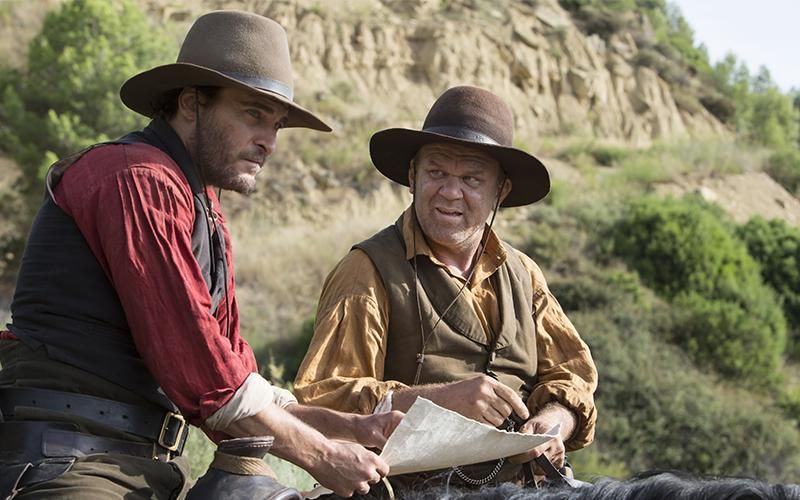Whether it’s the Alastair Sims classic from 1951, the more recent Disney animated version from 2009, or even the quirky Muppet adaptation from 1992, there’s a version of A Christmas Carol for every possible audience. Finding something that adds to that catalog rather than just repeats it was the happy challenge for Lauren Nichols, artistic director for all for One.
“A few years ago I started looking for Christmas pieces,” she said. “I’m not sure if I found it or if (retired executive director) Sharon Henderson found it. I chose to put it on our schedule then, but when the Civic Theatre announced their next season later, I saw they were going to do a musical version of A Christmas Carol, and I put it aside. So I’ve been sitting on it for three years.
“I love the story of A Christmas Carol and especially loved this adaptation and loved that it has something new to say. This version really has something fresh to offer.”
This particular version is a play within a play, the story of a struggling theater company staging a production of A Christmas Carol. This show focuses on a cantankerous stage manager and a young prop boy who ascend into the roles of Scrooge and Tiny Tim. In addition to 10 other actors, many of whom play multiple roles, the stage manager/Scrooge will be played by Peter Meyer while the role of prop boy/Tiny Tim will be handled by Jack Hanson, who up until now has had very little theatre experience.
“Our Scrooge is 6’4”, so he’s a big man,” Nichols said. “And our Tiny Tim is eight but looks about five and is so sweet. I’m so lucky we found him because I think if we’d had a bigger Tiny Tim they wouldn’t have been able to carry him like Tiny Tim is carried in the story.”
In addition to picking the right actors, Nichols says that there were some tricks in determining how to stage the show.
“In the original there was a magical trunk that everything came out of. Obviously we weren’t going to be able to pull that off so it was a matter of finding different ways, some seamless clever way, of doing all of that, but I think we finally figured that out.”
Nichols began casting and staging the show last summer, even before their fall production, Bentley, began in September. While not a musical production, there is music included in the performance, and Nichols wanted to begin working on those aspects with her cast.
“I started working with the casts of Bentley and A Christmas Carol last May. A Christmas Carol has some bell pieces, and I wanted new arrangements. I didn’t like the music they provided. The piece for the scene where Scrooge and Belle dance was part of it, and I didn’t care for it. So I thought ‘Carol of the Bells’ would work since it’s a waltz, and the character is named Belle anyway.”
There are still other reasons Nichols thinks this new twist on a Victorian holiday classic will appeal to theatergoers.
“The show is very minimalist and simple, and it also breaks the fourth wall and engages the audience. The actors from the stage will invite everyone to sing the Christmas carols. This isn’t a musical, but there is a lot of music in it. So we’ll have a guitarist, a violinist, and four actors playing hand bells. It’s been interesting to teach a couple of the actors who are not musicians how to play the hand bells.”
This version of the story, written by Doris Baizley and published in 1991, leaves director Nichols with some very interesting options, and she was pleasantly surprised how quickly it all came together in their first rehearsals after the staging of Bentley.
“The show is so quintessentially Victorian, but I didn’t want to necessarily set it in the Victorian era, so we’re making it around 1900, the end of the Victorian era and beginning of Edwardian era.
“We’re doing all the sound effects live to create the flavor of this play about a down-on-its-luck theater company. It doesn’t make sense for them to have the sound effects recorded because they wouldn’t have the budget for that. So let’s just say from the get-go, ‘This is a company that can’t do it big so they have to keep things very simple.’”
That simplicity perfectly coincides with the all for One home at the ArtsLab in the Auer Center for Arts and Culture. The minimalistic venue allows all who direct there a variety of options for staging and audience seating, providing a welcome versatility.
Nichols plans to use a commedia dell’arte approach even though, as she points out, that was gone long before the setting of this play. But she’s found a way to make it work for this production.
She also hopes that this adaptation of A Christmas Carol will prove popular enough to bring back on a recurring basis.
“I really want to start doing a holiday show in this slot every season,” she said. “Christmas shows are super well attended, and I can see us maybe finding a five- or six-year cycle where we rotate shows over the years, though I’d be open to something new if it came along.”





